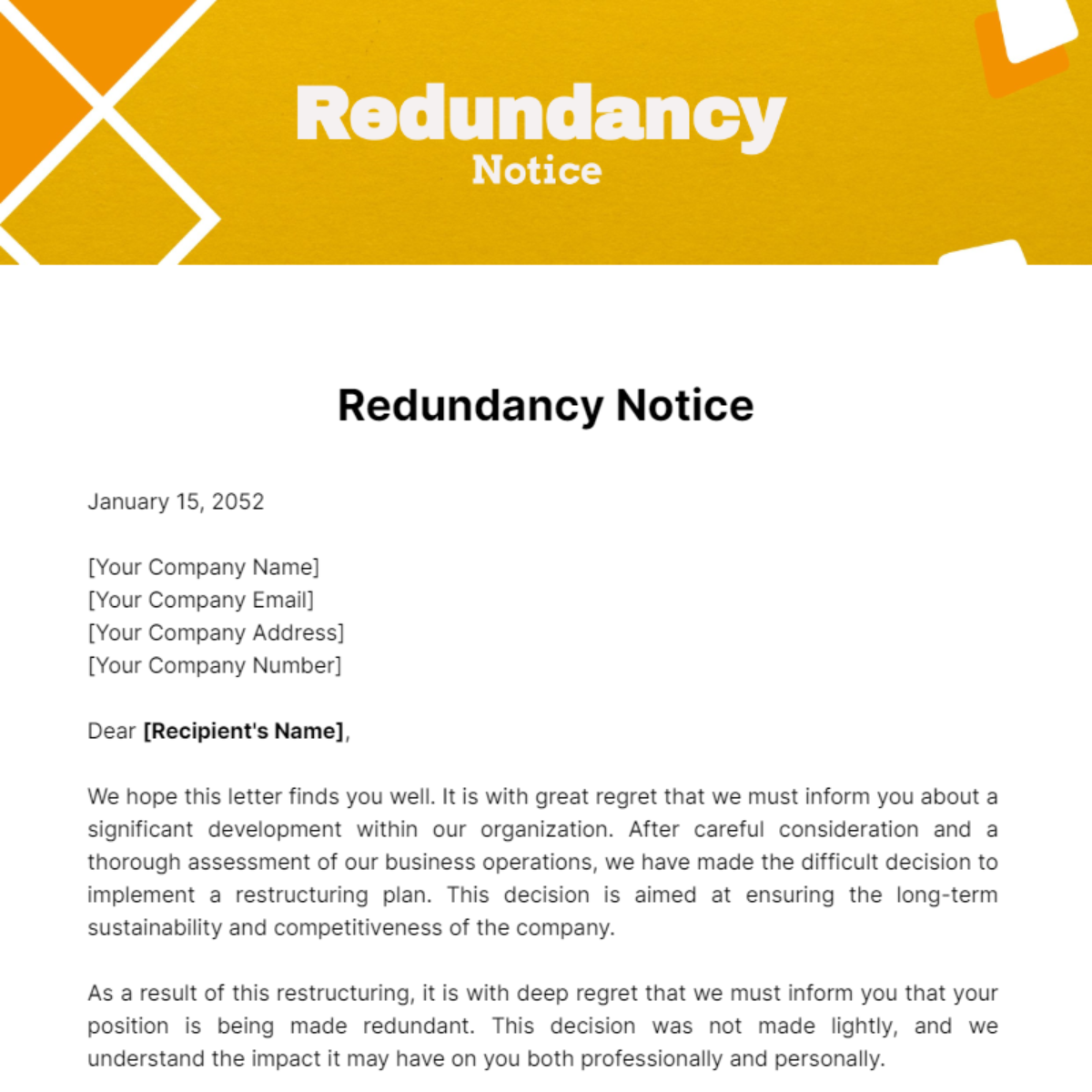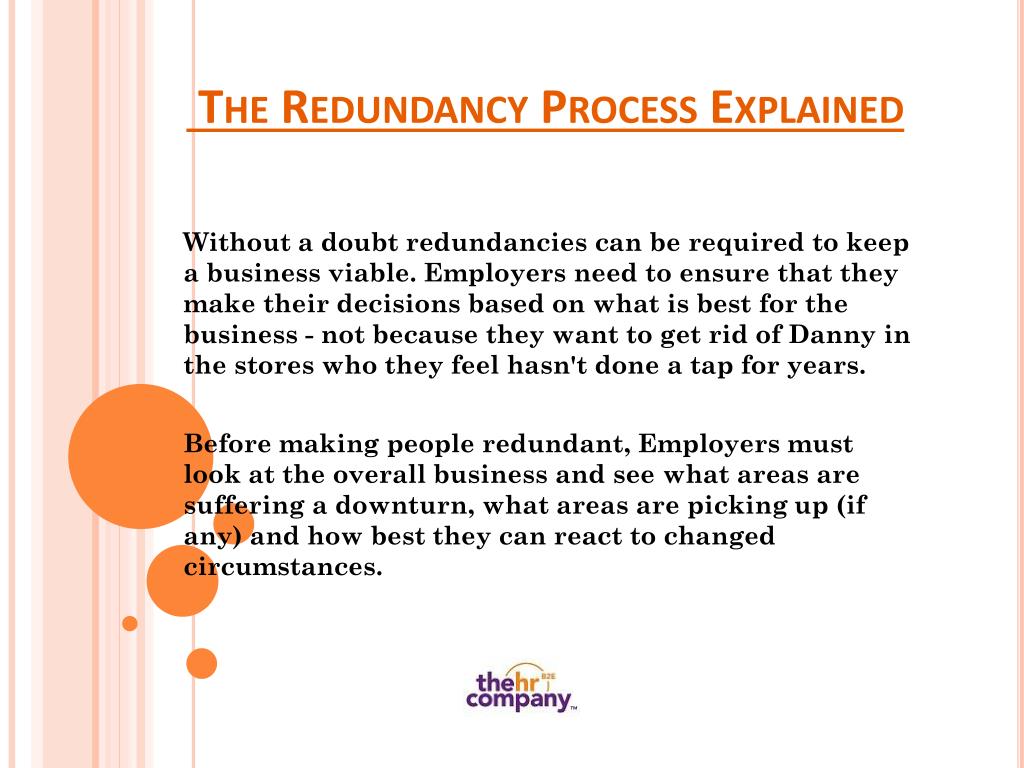Who Pays Redundancy Money? A Comprehensive Guide for Employers and Employees
Who Pays Redundancy Money? A Comprehensive Guide for Employers and Employees
Blog Article
Checking Out the Interplay Between Company Redundancy and Business Versatility for Future Growth
In the dynamic landscape these days's service world, the intricate partnership between company redundancy and business versatility emerges as a critical variable for sustained development and success. Business often encounter the challenge of striking a delicate balance in between keeping a degree of redundancy to reduce threats and cultivating versatility to respond promptly to the ever-evolving market demands. This fragile interaction holds the essential to not only surviving in unstable times but likewise thriving when faced with uncertainty. As we check out the complex dimensions of this interplay, fascinating insights into exactly how companies navigate these complexities to lead the means for future development wait for.
Significance of Company Redundancy
Company redundancy is a vital aspect that improves organizational resilience and minimizes operational dangers. By including redundancy actions within the organizational framework, firms can much better stand up to unanticipated interruptions and fluctuations in the business setting. Redundancy functions as a calculated buffer, permitting business to adjust and react efficiently to unexpected obstacles without compromising essential procedures.
One key element of the value of business redundancy is its duty in making certain connection during times of situation. When confronted with sudden adjustments or emergency situations, redundant systems, sources, or workers can action in to maintain vital functions and prevent prevalent disturbances. This continuity not just safeguards the business's credibility and consumer depend on yet likewise decreases monetary losses and operational downtime.

Approaches for Organizational Versatility

Another crucial approach is purchasing modern technology and infrastructure that can support flexibility and scalability. Implementing electronic devices, automation, and information analytics can simplify procedures, enhance performance, and give beneficial insights for notified decision-making. Moreover, creating adaptable organizational structures that enable fast changes to market dynamics and client demands is important for staying competitive in a quickly developing environment. By proactively determining prospective interruptions and opportunities, companies can proactively flourish and adjust in an ever-changing service landscape.
Balancing Redundancy and Flexibility
Attaining an unified stability in between functional redundancy and organizational flexibility is paramount in browsing the intricacies of a vibrant service environment. Striking the right equilibrium between redundancy and flexibility is a fragile process that needs a deep understanding of the organization's goals, market characteristics, and danger tolerance.
To accomplish this equilibrium, companies need to conduct regular assessments of their operations to determine areas where redundancy is necessary for threat mitigation and where flexibility can drive development and development. Applying adaptable structures, cultivating a society of continual discovering and enhancement, and encouraging open communication across all degrees of the company are key approaches to balance redundancy and flexibility efficiently. By lining up these two vital aspects, firms can place themselves for lasting growth and success in an ever-changing service landscape.
Case Research Studies on Adjustment Success
In taking a look at instances of effective organizational adjustment, it comes to be apparent that the interplay in between functional redundancy and versatility is a defining aspect in shaping durable businesses. One engaging instance research study is that of Netflix. Originally a DVD rental solution, Netflix demonstrated remarkable adaptability by transitioning right into a streaming platform when digitalization interrupted the sector. By purposefully purchasing innovation and content development, Netflix not just grew yet survived in a rapidly developing market. An additional standout instance is Amazon. Beginning as an online bookstore, Amazon constantly adapted its company model, increasing right into diverse markets such as cloud computer and expert system. This versatility enabled Amazon to stay in advance of competitors and meet changing consumer demands. Finally, Adobe offers a noteworthy image of successful adjustment. The company shifted from offering software licenses to a subscription-based model, ensuring persisting income streams and improved consumer engagement. These study highlight the significance of functional redundancy coupled with business flexibility in promoting lasting development and competitiveness.
Building Resilience for Future Development
Structure resilience for future growth calls for a critical positioning of functional processes with market dynamics and emerging trends. Companies have to adjust to changing environments by promoting a society of adaptability, advancement, and continuous enhancement. Resilience includes not only recovering from setbacks but additionally proactively preparing for future difficulties. One essential facet of building strength is purchasing durable risk management methods to reduce possible interruptions. This consists of situation planning, branching out supply chains, and establishing backup strategies for various contingencies (who pays redundancy money).
In addition, promoting strong partnerships with stakeholders, such as small business closing employee rights uk clients, staff members, vendors, and the area, is essential for maintaining and weathering uncertainties trust and support during stormy times. Reliable communication and openness play an essential role in building strength, as they help promote and straighten expectations partnership in browsing uncertainties.
Additionally, organizations require to prioritize knowing and advancement efforts to upskill workers and outfit them with the required tools to adapt to changing scenarios. By purchasing their labor force, business can enhance their versatility and agility, eventually enhancing their strength for sustainable future growth.
Final Thought

In the dynamic landscape of today's company globe, the complex connection between business redundancy and organizational flexibility emerges as an essential element for sustained growth and success. Business typically encounter the challenge of striking a fragile balance between preserving a level of redundancy to alleviate risks and cultivating versatility to respond promptly to the ever-evolving market demands.To attain this balance, business need to carry out regular analyses of their operations to determine locations where redundancy is needed for danger mitigation and where flexibility can drive technology and development.In conclusion, the interplay between firm redundancy and business adaptability is important for future growth. Structure strength with a mix of redundancy and adaptability will guarantee that companies are prepared for the difficulties of the future.
Report this page